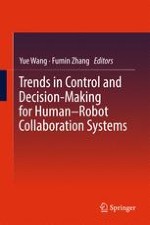2017 | OriginalPaper | Chapter
9. Regret-Based Allocation of Autonomy in Shared Visual Detection for Human–Robot Collaborative Assembly in Manufacturing
Authors : S. M. Mizanoor Rahman, Zhanrui Liao, Longsheng Jiang, Yue Wang
Published in: Trends in Control and Decision-Making for Human–Robot Collaboration Systems
Publisher: Springer International Publishing
Activate our intelligent search to find suitable subject content or patents.
Select sections of text to find matching patents with Artificial Intelligence. powered by
Select sections of text to find additional relevant content using AI-assisted search. powered by
